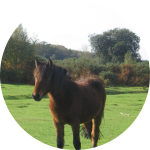|
Horse Stall contains all types of information for Horse Lovers.
There are a number of products branded horse gifts and products.
All gifts have a unique horse design that horse lovers and pony
owners will appreciate. Branded items include: t-shirts, sweatshirts,
sneakers, posters, skateboards, mouse pads, stickers, bumper stickers,
buttons, mugs, tote bags, invitations, greeting cards, neckties,
postcards, posters, prints and much more!
Horse Articles :: Buckskin Horses
Buckskin Horse
|
|
Although not a specific breed, the Buckskin is a common color
found in many breeds of horses. In the simplest sense, a Buckskin
horse should be the color of tanned deer hide with black points.
Somewhat like the Siamese cat or the Himalayan rabbit pattern,
but on a horse. In the more complex description, Buckskins
are horses with a base coat color of either bay or brown that
varies in shade from pale cream to a deep rich golden color,
with dark legs, dark manes and dark tails that are either
black or very dark brown. The coat may change shades with
the seasons.
However, contrary to common beliefs, the Buckskin or Dun horses
are not mere "colors" in the world of horses. Buckskins, along
with Grulla and Duns, are noted for many qualities that are
not characteristic of other types of horses. The color seems
to be an indication of some superior genetic qualities that
they possess. They have more stamina, more strength, more
determination, harder feet, surer footing, better boning,
and are generally hardier than other colored horses within
the same breed. Buckskins were highly regarded by the cowboys
of the early west and were used for pack, harness, and saddle
and given a choice a cowboy would almost always choose the
Buckskin or Dun horse.
The Buckskin horse traces its lineage through a direct line
of Dun - or Buckskin-colored ancestors, which go as far back
as the available recorded history. The Buckskin is thought
to have originated from the now nearly extinct Spanish Sorraia
of the Iberian Peninsula. There are also many indications
that an ancient breed known as the Norwegian Dun or Norwegian
Fjord from Scandinavia may also have obtained the Dun coloring
from these same horses of Spain. Since the blood of both the
Sorraia and the Norwegian Dun have filtered into nearly every
breed found in the world today, Buckskin, Dun or Grulla may
be found in nearly every breed that allows all colors of equines
in their registries.
Discussion of the Buckskin however cannot be complete without
a brief discussion of the genetics involved, although to anyone
but a breeder who would like to either produce Buckskins or
avoid them; it may be a bit confusing.
Those who studied genetics used to believe that the Dun horse
was the result of a dilution gene, and that breeding Duns
to Buckskins often resulted in the birth of an albino foal.
However, this has been proven to be in error. It is the agouti
locus that affects the shade of the Buckskin horses. Different
alleles of the agouti locus seem to be responsible for the
different shades of yellow through cream, as well as affecting
the distribution of the dark pigment on the legs, mane and
tail.
Smokey black horses are sometimes called black buckskins or,
if in the UK, dilute blacks. These are black horses with a
cream gene that may be very difficult to identify because
they may look bay, brown, liver chestnut or even faded black.
The CCr allele is a semi-dominant and dilutes red pigment
to yellow when in the heterozygous form but it has only a
very subtle effect on black pigment. The wild-type C+ allele
is recessive since it needs to be homozygous for there to
be no dilution of the base color at all. Buckskin and Dun
genetics are thoroughly discussed on the Coat Color Genetics
web site of the University of California - Davis Genetics
Laboratory, as well as other horse coat color genetics sites.
The American Buckskin Registry (ABR) keeps track of these
lovely colored horses. It was founded in the United States
in 1962 and opened its registry not only to the Buckskin,
but also to Grulla and Dun colored horses. It also includes
the Red Dun with varying body shades of red, and the Mouse
Dun or Coyote Dun, a slate color resembling a salt-and-pepper
coloration.
Unlike some color breeds, the ABR will not enter any horse
into its registry that shows signs of below-average conformation
for its breed, regardless of the desired coloring. The mature
horse is to stand at least 14 hands in order to be registered
with the ABR.Ponies and horses showing a predominance of draft
horse blood are not eligible.
Author Resource:-> Crystal is a writer for http://www.HorseClicks.com,
classifieds of Peruvian Paso Horses for sale
|
|
|


